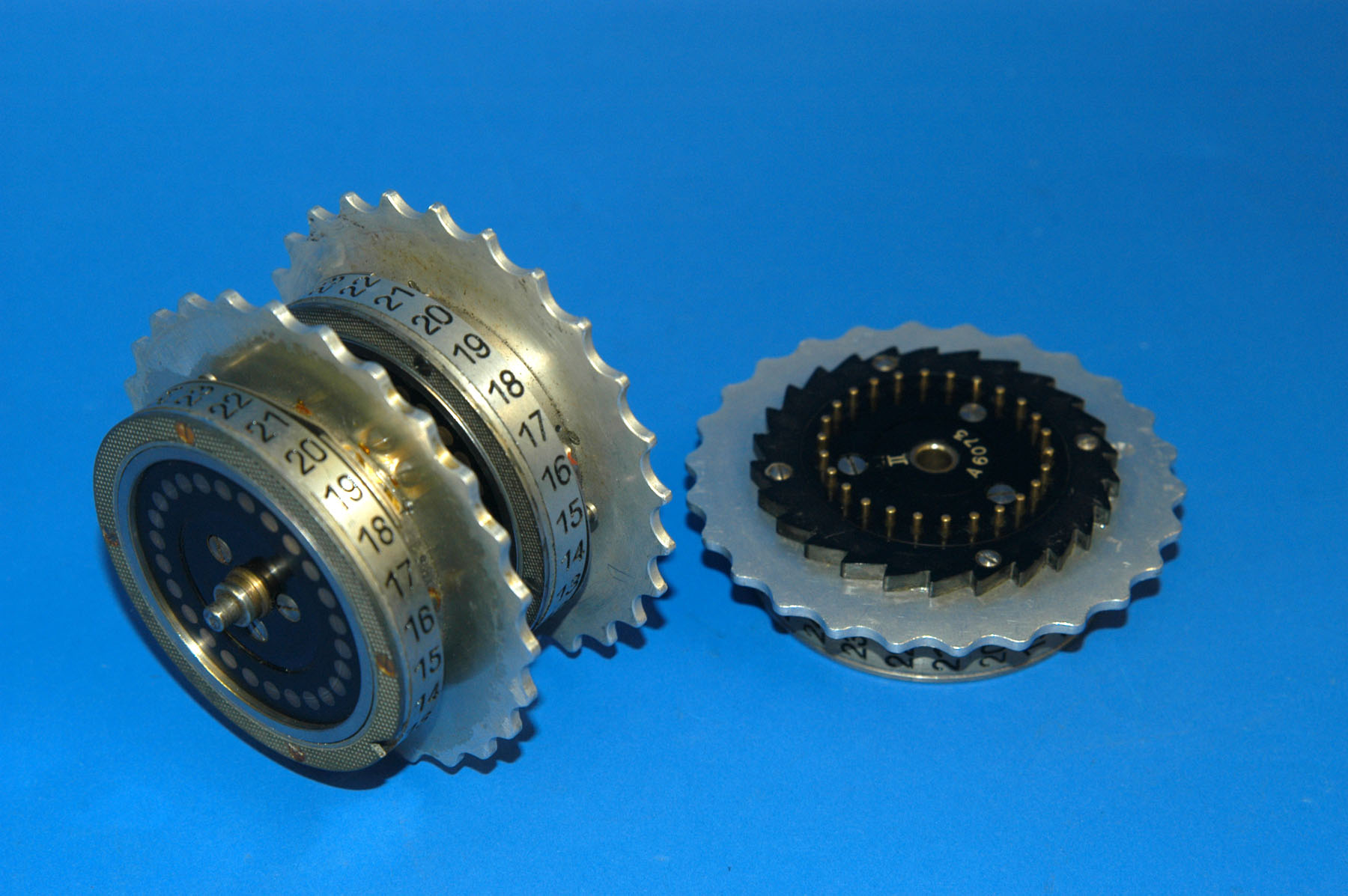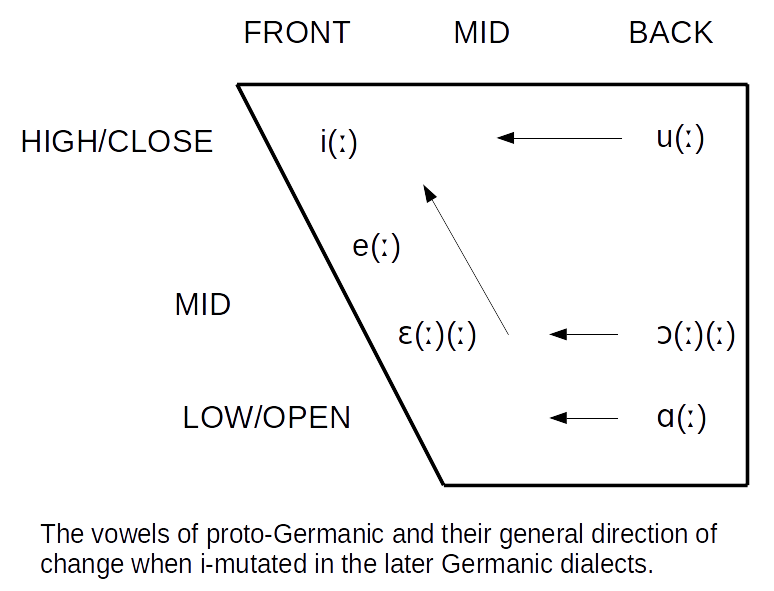|
Grill (cryptology)
The grill method ( pl, metoda rusztu), in cryptology, was a method used chiefly early on, before the advent of the cyclometer, by the mathematician-cryptologists of the Polish Cipher Bureau ('' Biuro Szyfrów'') in decrypting German Enigma machine ciphers. The Enigma rotor cipher machine changes plaintext characters into cipher text using a different permutation for each character, and so implements a polyalphabetic substitution cipher. Background The German navy started using Enigma machines in 1926; it was called ''Funkschlüssel C'' ("Radio cipher C"). By 15 July 1928, the German Army (''Reichswehr'') had introduced their own version of the Enigma—the ''Enigma G''; a revised ''Enigma I'' (with plugboard) appeared in June 1930. The Enigma I used by the German military in the 1930s was a 3-rotor machine. Initially, there were only three rotors labeled ''I'', ''II'', and ''III'', but they could be arranged in any order when placed in the machine. Rejewski identified the rot ... [...More Info...] [...Related Items...] OR: [Wikipedia] [Google] [Baidu] |
Cryptology
Cryptography, or cryptology (from grc, , translit=kryptós "hidden, secret"; and ''graphein'', "to write", or '' -logia'', "study", respectively), is the practice and study of techniques for secure communication in the presence of adversarial behavior. More generally, cryptography is about constructing and analyzing protocols that prevent third parties or the public from reading private messages. Modern cryptography exists at the intersection of the disciplines of mathematics, computer science, information security, electrical engineering, digital signal processing, physics, and others. Core concepts related to information security ( data confidentiality, data integrity, authentication, and non-repudiation) are also central to cryptography. Practical applications of cryptography include electronic commerce, chip-based payment cards, digital currencies, computer passwords, and military communications. Cryptography prior to the modern age was effectively synonymous wit ... [...More Info...] [...Related Items...] OR: [Wikipedia] [Google] [Baidu] |
Marian Rejewski
Marian Adam Rejewski (; 16 August 1905 – 13 February 1980) was a Polish mathematician and cryptologist who in late 1932 reconstructed the sight-unseen German military Enigma cipher machine, aided by limited documents obtained by French military intelligence. Over the next nearly seven years, Rejewski and fellow mathematician-cryptologists Jerzy Różycki and Henryk Zygalski developed and used techniques and equipment to decrypt the German machine ciphers, even as the Germans introduced modifications to their equipment and encryption procedures. Five weeks before the outbreak of World War II the Poles, at a conference in Warsaw, shared their achievements with the French and British, thus enabling Britain to begin reading German Enigma-encrypted messages, seven years after Rejewski's original reconstruction of the machine. The intelligence that was gained by the British from Enigma decrypts formed part of what was code-named Ultra and contributed—perhaps decisively—to the d ... [...More Info...] [...Related Items...] OR: [Wikipedia] [Google] [Baidu] |
History Of Cryptography
Cryptography, the use of codes and ciphers to protect secrets, began thousands of years ago. Until recent decades, it has been the story of what might be called classical cryptography — that is, of methods of encryption that use pen and paper, or perhaps simple mechanical aids. In the early 20th century, the invention of complex mechanical and electromechanical machines, such as the Enigma rotor machine, provided more sophisticated and efficient means of encryption; and the subsequent introduction of electronics and computing has allowed elaborate schemes of still greater complexity, most of which are entirely unsuited to pen and paper. The development of cryptography has been paralleled by the development of cryptanalysis — the "breaking" of codes and ciphers. The discovery and application, early on, of frequency analysis to the reading of encrypted communications has, on occasion, altered the course of history. Thus the Zimmermann Telegram triggered the United States' en ... [...More Info...] [...Related Items...] OR: [Wikipedia] [Google] [Baidu] |
Permutation Matrix
In mathematics, particularly in matrix theory, a permutation matrix is a square binary matrix that has exactly one entry of 1 in each row and each column and 0s elsewhere. Each such matrix, say , represents a permutation of elements and, when used to multiply another matrix, say , results in permuting the rows (when pre-multiplying, to form ) or columns (when post-multiplying, to form ) of the matrix . Definition Given a permutation of ''m'' elements, :\pi : \lbrace 1, \ldots, m \rbrace \to \lbrace 1, \ldots, m \rbrace represented in two-line form by :\begin 1 & 2 & \cdots & m \\ \pi(1) & \pi(2) & \cdots & \pi(m) \end, there are two natural ways to associate the permutation with a permutation matrix; namely, starting with the ''m'' × ''m'' identity matrix, , either permute the columns or permute the rows, according to . Both methods of defining permutation matrices appear in the literature and the properties expressed in one representation can be easily converted to th ... [...More Info...] [...Related Items...] OR: [Wikipedia] [Google] [Baidu] |
Sicherheitsdienst
' (, ''Security Service''), full title ' (Security Service of the ''Reichsführer-SS''), or SD, was the intelligence agency of the SS and the Nazi Party in Nazi Germany. Established in 1931, the SD was the first Nazi intelligence organization and the Gestapo (formed in 1933) was considered its sister organization through the integration of SS members and operational procedures. The SD was administered as an independent SS office between 1933 and 1939. That year, the SD was transferred over to the Reich Security Main Office (''Reichssicherheitshauptamt''; RSHA), as one of its seven departments. Its first director, Reinhard Heydrich, intended for the SD to bring every single individual within the Third Reich's reach under "continuous supervision". Following Germany's defeat in World War II, the tribunal at the Nuremberg trials officially declared that the SD was a criminal organisation, along with the rest of Heydrich's RSHA (including the Gestapo) both individually and as branch ... [...More Info...] [...Related Items...] OR: [Wikipedia] [Google] [Baidu] |
Combination
In mathematics, a combination is a selection of items from a set that has distinct members, such that the order of selection does not matter (unlike permutations). For example, given three fruits, say an apple, an orange and a pear, there are three combinations of two that can be drawn from this set: an apple and a pear; an apple and an orange; or a pear and an orange. More formally, a ''k''-combination of a Set (mathematics), set ''S'' is a subset of ''k'' distinct elements of ''S''. So, two combinations are identical if and only if each combination has the same members. (The arrangement of the members in each set does not matter.) If the set has ''n'' elements, the number of ''k''-combinations, denoted as C^n_k, is equal to the binomial coefficient \binom nk = \frac, which can be written using factorials as \textstyle\frac whenever k\leq n, and which is zero when k>n. This formula can be derived from the fact that each ''k''-combination of a set ''S'' of ''n'' members has k! ... [...More Info...] [...Related Items...] OR: [Wikipedia] [Google] [Baidu] |
Clock (cryptography)
In cryptography, the clock was a method devised by Polish mathematician-cryptologist Jerzy Różycki, at the Polish General Staff's Cipher Bureau, to facilitate decrypting German Enigma ciphers. The method determined the rightmost rotor in the German Enigma by exploiting the different turnover positions. For the Poles, learning the rightmost rotor reduced the rotor-order search space by a factor of 3 (the number of rotors). The British improved the method, and it allowed them to use their limited number of bombes more effectively (the British confronted 5 to 8 rotors). Method This method sometimes made it possible to determine which of the Enigma machine's rotors was at the far right, that is, in the position where the rotor always revolved at every depression of a key. The clock method was developed by Jerzy Różycki during 1933–1935. Marian Rejewski's grill method could determine the right-hand rotor, but that involved trying each possible rotor permutation (there wer ... [...More Info...] [...Related Items...] OR: [Wikipedia] [Google] [Baidu] |
Alan Turing
Alan Mathison Turing (; 23 June 1912 – 7 June 1954) was an English mathematician, computer scientist, logician, cryptanalyst, philosopher, and theoretical biologist. Turing was highly influential in the development of theoretical computer science, providing a formalisation of the concepts of algorithm and computation with the Turing machine, which can be considered a model of a general-purpose computer. He is widely considered to be the father of theoretical computer science and artificial intelligence. Born in Maida Vale, London, Turing was raised in southern England. He graduated at King's College, Cambridge, with a degree in mathematics. Whilst he was a fellow at Cambridge, he published a proof demonstrating that some purely mathematical yes–no questions can never be answered by computation and defined a Turing machine, and went on to prove that the halting problem for Turing machines is undecidable. In 1938, he obtained his PhD from the Department of Mathemati ... [...More Info...] [...Related Items...] OR: [Wikipedia] [Google] [Baidu] |
Permutation
In mathematics, a permutation of a set is, loosely speaking, an arrangement of its members into a sequence or linear order, or if the set is already ordered, a rearrangement of its elements. The word "permutation" also refers to the act or process of changing the linear order of an ordered set. Permutations differ from combinations, which are selections of some members of a set regardless of order. For example, written as tuples, there are six permutations of the set , namely (1, 2, 3), (1, 3, 2), (2, 1, 3), (2, 3, 1), (3, 1, 2), and (3, 2, 1). These are all the possible orderings of this three-element set. Anagrams of words whose letters are different are also permutations: the letters are already ordered in the original word, and the anagram is a reordering of the letters. The study of permutations of finite sets is an important topic in the fields of combinatorics and group theory. Permutations are used in almost every branch of mathematics, and in many other fields of scie ... [...More Info...] [...Related Items...] OR: [Wikipedia] [Google] [Baidu] |
Augustin-Louis Cauchy
Baron Augustin-Louis Cauchy (, ; ; 21 August 178923 May 1857) was a French mathematician, engineer, and physicist who made pioneering contributions to several branches of mathematics, including mathematical analysis and continuum mechanics. He was one of the first to state and rigorously prove theorems of calculus, rejecting the heuristic principle of the generality of algebra of earlier authors. He almost singlehandedly founded complex analysis and the study of permutation groups in abstract algebra. A profound mathematician, Cauchy had a great influence over his contemporaries and successors; Hans Freudenthal stated: "More concepts and theorems have been named for Cauchy than for any other mathematician (in elasticity alone there are sixteen concepts and theorems named for Cauchy)." Cauchy was a prolific writer; he wrote approximately eight hundred research articles and five complete textbooks on a variety of topics in the fields of mathematics and mathematical physics. B ... [...More Info...] [...Related Items...] OR: [Wikipedia] [Google] [Baidu] |
Germanic Umlaut
The Germanic umlaut (sometimes called i-umlaut or i-mutation) is a type of linguistic umlaut in which a back vowel changes to the associated front vowel ( fronting) or a front vowel becomes closer to (raising) when the following syllable contains , , or . It took place separately in various Germanic languages starting around AD 450 or 500 and affected all of the early languages except Gothic. An example of the resulting vowel alternation is the English plural ''foot ~ feet'' (from Proto-Germanic , pl. ). Germanic umlaut, as covered in this article, does not include other historical vowel phenomena that operated in the history of the Germanic languages such as Germanic a-mutation and the various language-specific processes of u-mutation, nor the earlier Indo-European ablaut (''vowel gradation''), which is observable in the conjugation of Germanic strong verbs such as ''sing/sang/sung''. While Germanic umlaut has had important consequences for all modern Germanic languag ... [...More Info...] [...Related Items...] OR: [Wikipedia] [Google] [Baidu] |







